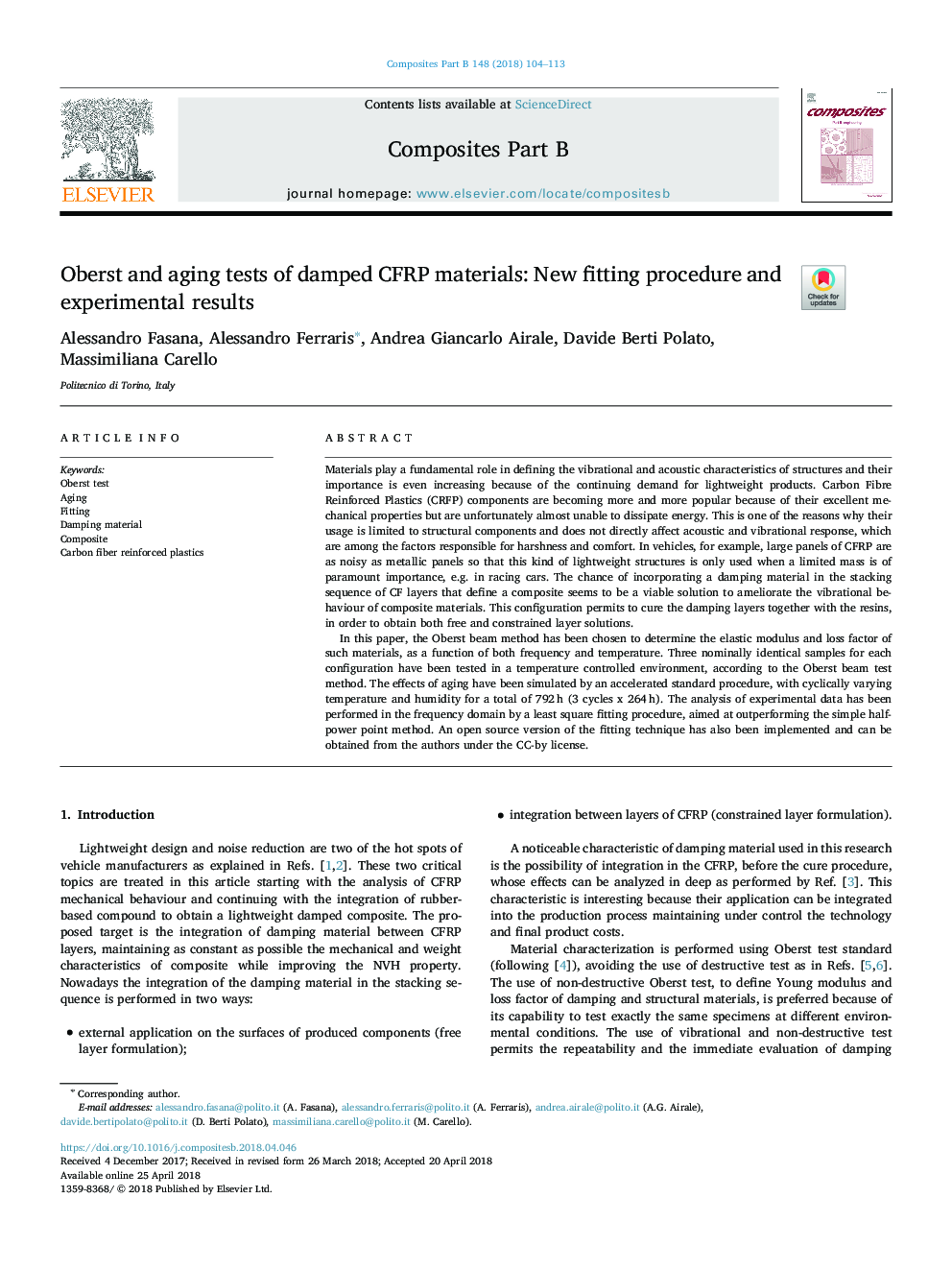| Article ID | Journal | Published Year | Pages | File Type |
|---|---|---|---|---|
| 7211897 | Composites Part B: Engineering | 2018 | 10 Pages |
Abstract
In this paper, the Oberst beam method has been chosen to determine the elastic modulus and loss factor of such materials, as a function of both frequency and temperature. Three nominally identical samples for each configuration have been tested in a temperature controlled environment, according to the Oberst beam test method. The effects of aging have been simulated by an accelerated standard procedure, with cyclically varying temperature and humidity for a total of 792â¯h (3 cycles x 264â¯h). The analysis of experimental data has been performed in the frequency domain by a least square fitting procedure, aimed at outperforming the simple half-power point method. An open source version of the fitting technique has also been implemented and can be obtained from the authors under the CC-by license.
Related Topics
Physical Sciences and Engineering
Engineering
Engineering (General)
Authors
Alessandro Fasana, Alessandro Ferraris, Andrea Giancarlo Airale, Davide Berti Polato, Massimiliana Carello,
